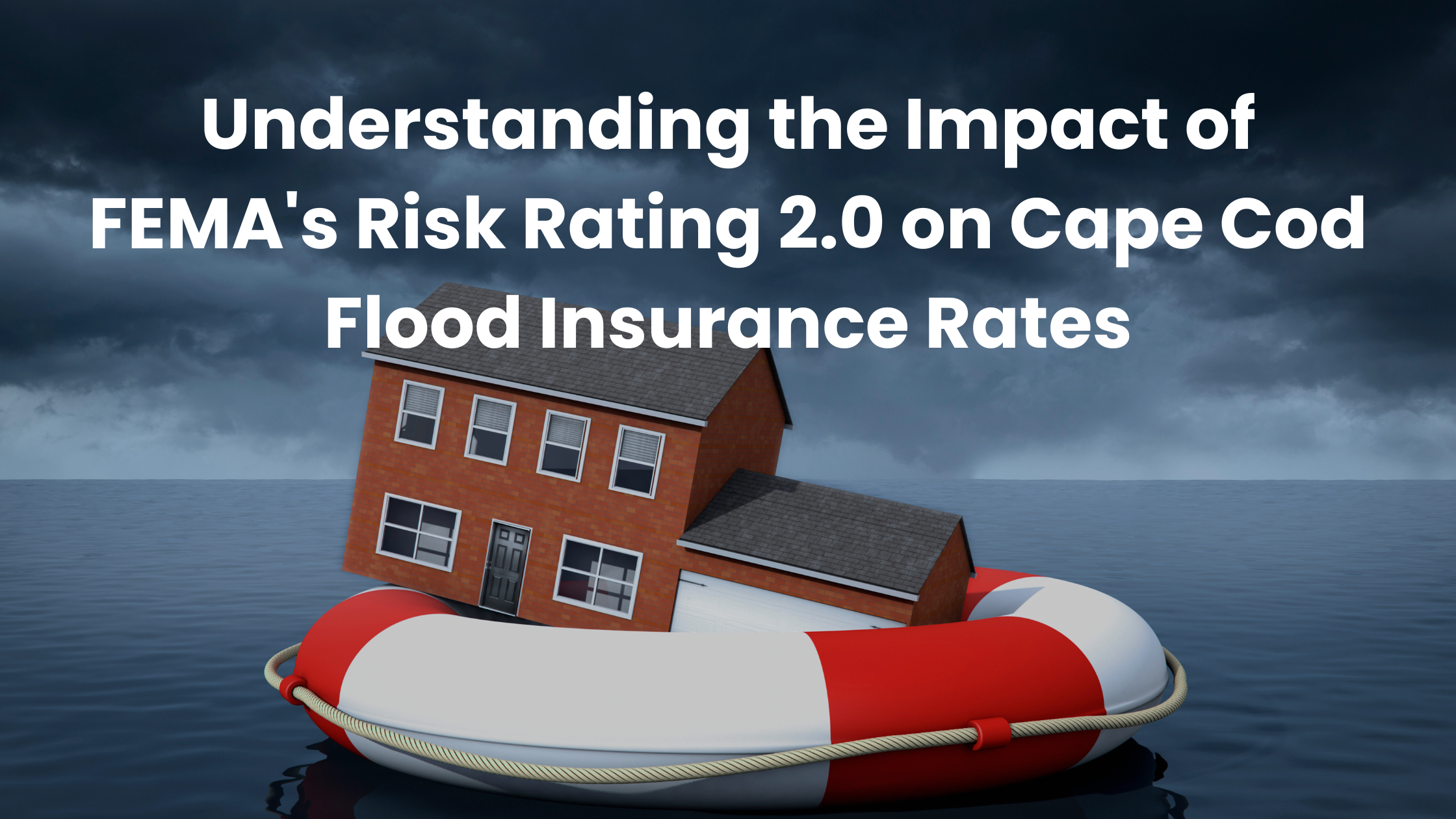
Cape Cod, with its picturesque coastal homes and scenic landscapes, is a beloved destination for many. However, the region faces the challenges of rising sea levels and increased flood risks. Recent changes in flood insurance rates have left Cape Cod property owners with numerous questions and concerns. In this article, we will delve into the details of how FEMA’s Risk Rating 2.0 is influencing flood insurance rates on Cape Cod, shedding light on the reasons behind these rate changes and what property owners can expect in the coming months.
The Aftermath of the December 23 Storm
December 23, 2022, marked a pivotal moment for Cape Cod when a powerful storm inundated the region, causing extensive flooding and property damage. Many property owners have been grappling with the aftermath of this storm. Despite having flood insurance, some are still waiting for their insurance companies to cover all the damages. The experience is frustrating, and many face lackluster responses from their insurers. To make matters worse, some insurance companies are not renewing their policies.
Soaring Insurance Rates
Across Cape Cod, property owners are witnessing a dramatic increase in insurance rates, affecting both flood and homeowners insurance policies. Some insurance providers are even issuing notices of non-renewal, while others are declining to offer policies to properties located near coastal and flood-prone areas.
These challenges are not unique to Cape Cod. Natural disasters, including floods, severe storms, and wildfires, have led to staggering losses for insurance companies nationwide. In 2021 alone, damage from natural disasters amounted to a staggering $92 billion, with cumulative losses of $400 billion from 2017 to 2021.
FEMA’s Risk Rating 2.0 and Its Impact
FEMA’s Risk Rating 2.0, fully implemented in April 2023, is at the heart of the changes in insurance rates on Cape Cod. This revamped risk rating system places a stronger emphasis on individual property risks and elevations. Unlike the previous one-size-fits-all approach, Risk Rating 2.0 evaluates each property independently. Factors such as flood frequency, flood source (river overflow, storm surge, etc.), property elevation, and cost of rebuilding are considered in determining insurance rates.
Under Risk Rating 2.0, a pier foundation that elevates a home can reduce risks, as can the property’s elevation and distance from potential flooding sources. This means that even properties within the same flood zone may experience varying insurance rates.
The Shift Towards Actual Risk Assessment
Previously, many policies had been subsidized, resulting in policyholders paying rates that didn’t accurately reflect their actual risk. Risk Rating 2.0 aims to rectify this by gradually increasing rates each year until they align with the actuarial full-risk rate. Insurance companies faced significant financial losses when concentrated in disaster-prone areas, such as Florida during Hurricane Ian or California during wildfires. Spreading the risk more evenly is a key objective.
The Current Landscape
Risk Rating 2.0 was initially introduced in April 2021 and has been gradually implemented since. Today, every policyholder is rated under this new system. Approximately 40% of policyholders in Massachusetts have seen a decrease in policy costs, while 50% have experienced increases of around $120 per year for properties valued at $400,000 or less. Higher-value properties may witness steeper rate hikes, while some policyholders will see no change in their rates.
Flood Insurance Options on Cape Cod
Property owners on Cape Cod have options when it comes to flood insurance. Some private insurers in Massachusetts offer flood insurance policies, but coverage is also available through FEMA’s National Flood Insurance Program (NFIP), which was established in 1968 to provide flood insurance access and reduce flood risk through floodplain management practices. NFIP provides coverage for both building structures and contents.
However, it’s important to note that only properties with federally-backed mortgages are required to carry flood insurance. Homeowners policies do not typically cover flood damage. Even homeowners insurance policies have witnessed significant tightening of coverage across the United States.
The Future of Flood Insurance
The NFIP is currently set to expire on September 30, with the program having undergone 21 short-term extensions since its last multi-year reauthorization. Proposed reforms, including capping annual rate increases at 9%, providing vouchers for low- and middle-income policyholders, investing in mitigation efforts, and limiting private insurance company profits, are under consideration. These reforms aim to make flood insurance more accessible and equitable for property owners.
Community Mitigation Efforts
FEMA’s Community Rating System (CRS) awards discounts on flood insurance premiums to communities that have taken measures to reduce flood risks and minimize damage. These actions can range from preserving open space in floodplains to enforcing building codes and promoting responsible land use practices.
Several Cape Cod towns actively participate in the CRS program, resulting in discounted flood insurance premium rates. For instance, Brewster, Eastham, and Provincetown offer a 10% discount, while Chatham, Harwich, Mashpee, Orleans, Sandwich, and Wellfleet provide a 15% discount on flood insurance premiums.
Conclusion
As property owners on Cape Cod grapple with changing flood insurance rates, it is crucial to stay informed about the evolving landscape of flood insurance. FEMA’s Risk Rating 2.0 introduces a more tailored approach to assessing risk, and potential program reforms offer both challenges and opportunities. By understanding these changes and participating in community mitigation efforts, Cape Cod residents can better prepare for the shifting tides of flood insurance rates and ensure their homes remain protected.

